You might be familiar with the thylacine, or the Tasmanian tiger. This animal went extinct in 1936, in a zoo in Hobart, Tasmania. Since then, numerous people claim they’ve spotted the animal wandering the lands of Tasmania, though much of that is left for speculation. But only recently has a museum revealed a 130-year-old specimen containing bits of RNA. Scientists are looking to jump on this opportunity to try to resurrect the Tasmanian Tiger and bring it back to life in ways that seem impossible. Imagine if scientists tried to do that with every animal species that’s gone extinct. We’d likely have dinosaurs roaming around our planet.

It Wasn’t A Tiger
Let’s start with the most important fact about the Tasmanian Tiger. Contrary to popular belief at the time, the Tasmanian Tiger isn’t a tiger, but a carnivorous marsupial. It had distinctive tiger-like stripes on its tail, hence the name tiger. And despite the marsupial pouch, the animal most closely related to the koala bear and kangaroo, and even the banded anteater. Doesn’t seem so threatening now, does it? (Thought Co).
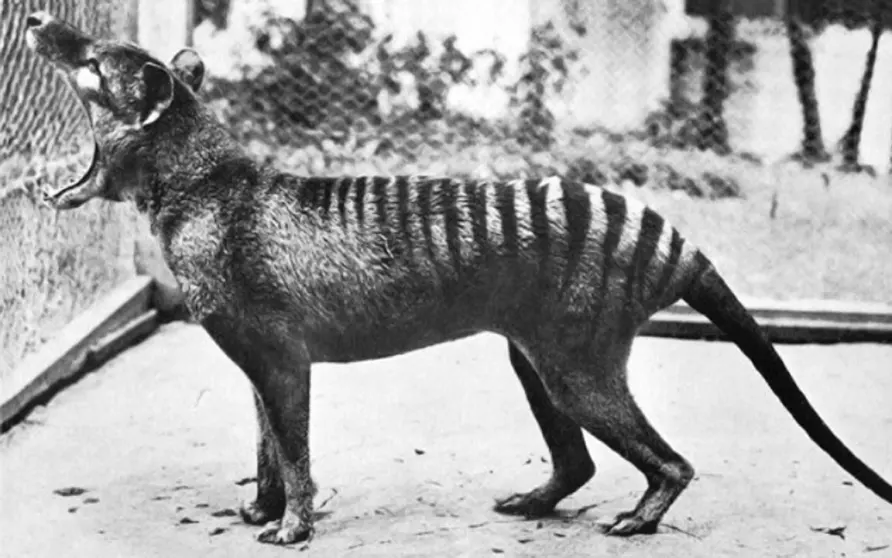
Remarkable Jaw Flexibility
The Tasmanian tiger had a highly unique jaw structure that set it apart from other marsupials. These animals could open their mouths almost 90 degrees, according to the Encyclopedia Britannica. This ability to stretch its jaw was crucial for capturing and consuming animals like wallabies and possums in its native Tasmania, where it served as the top predator. However, a study in the August 2011 Journal of Zoology found that the Tasmanian tiger wouldn’t have been able to kill large prey because of its weak jaw. (Live Science)
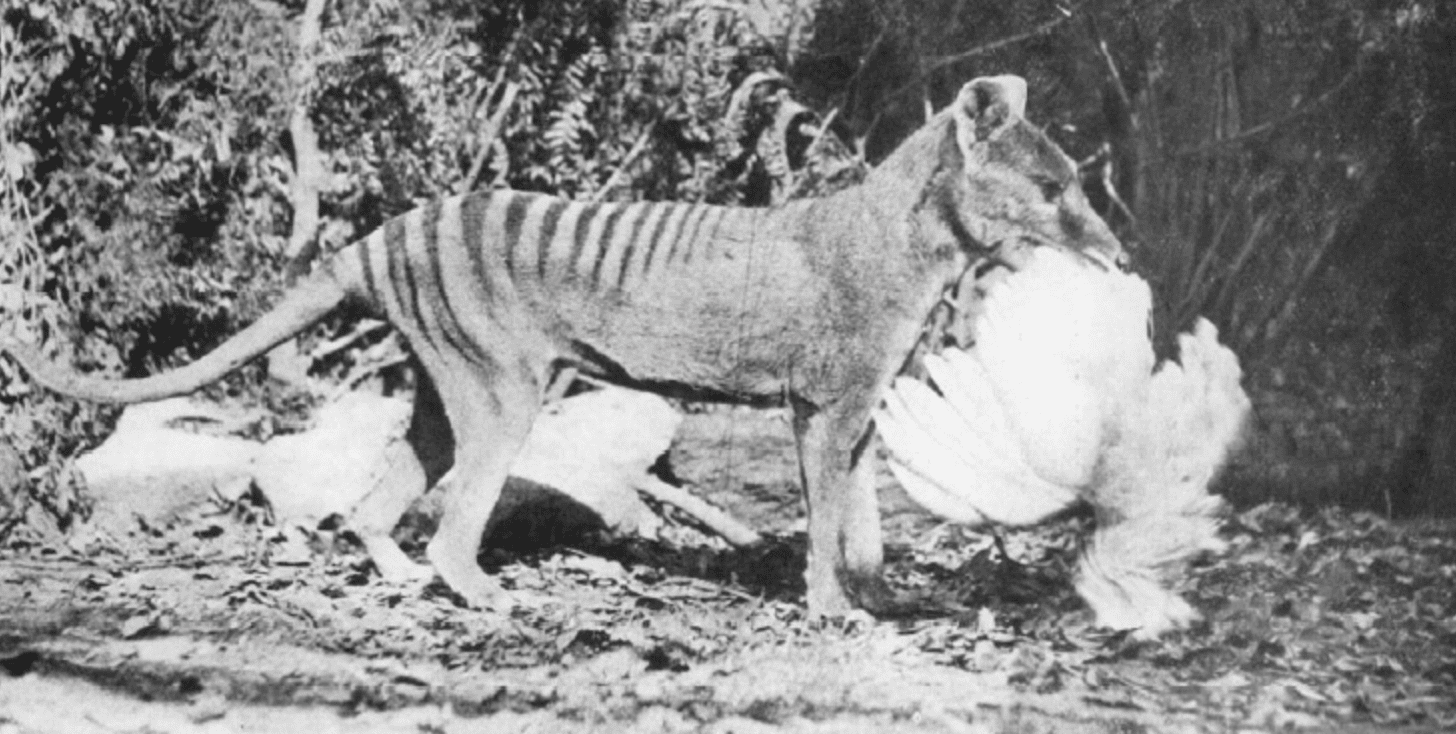
People Call It A Blood Sucking Tiger
Superstitiously, people considered the Tasmanian Tiger to be blood-sucking, like a marsupial ghost. This is the reason many settlers took a liking to hunting the tiger. They wanted to stop it from attacking and eating anything it could get its jaws and claws on. Biologists even believed newspapers put out staged photographs of Tasmanian Tigers to make it look like it was a blood drinker (Ripleys).
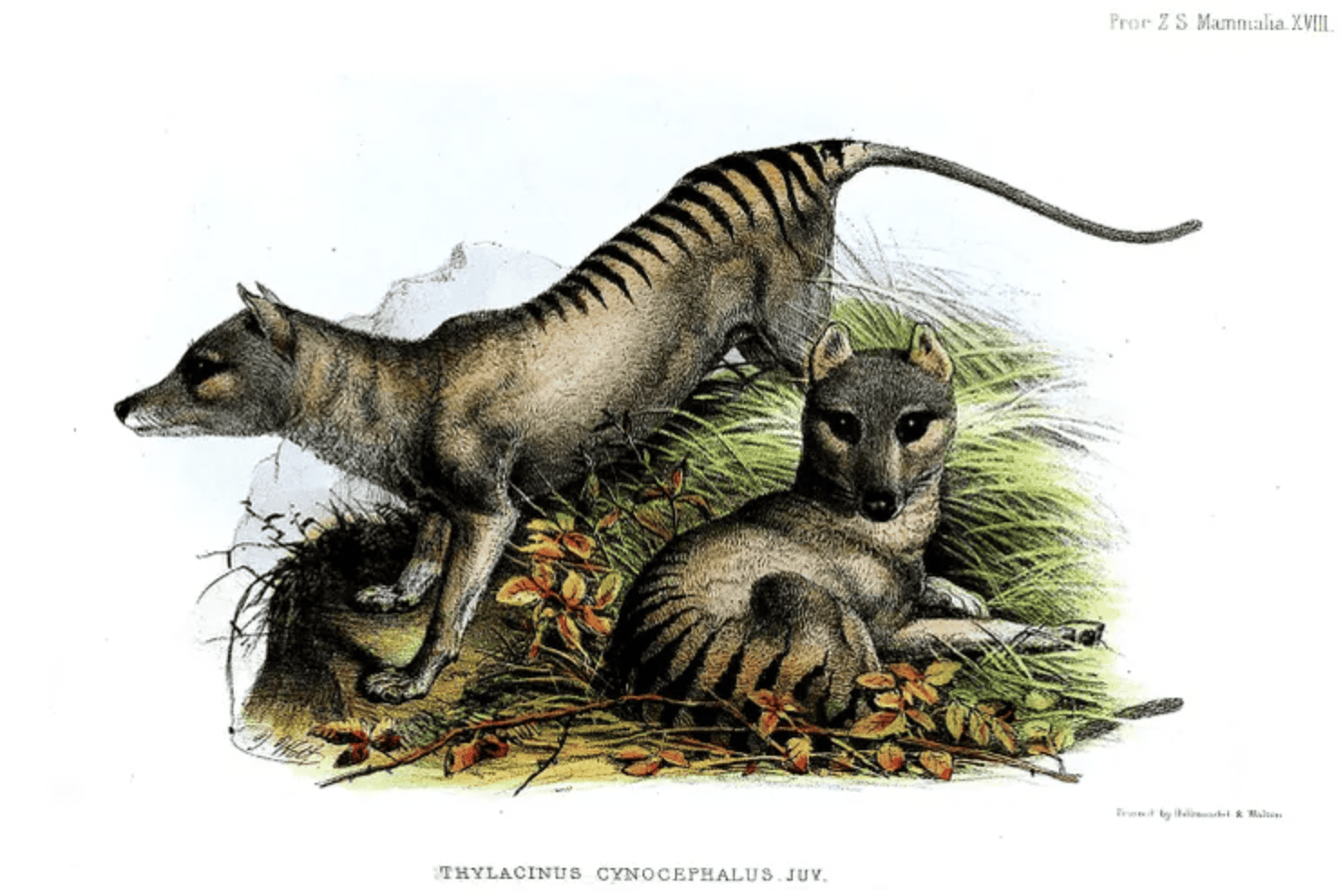
Both Males And Females Had Pouches
In marsupials, only the female has pouches. But in the Tasmanian Tiger species, the males also had pitches. They used this as a defense or protection mechanism during freezing temperatures, or when they were fighting with other males. They also believe this pouch was to protect their genitalia while running through dense vegetation, indicating an adaptation to their habitat. Tasmanian Tigers tended to hop like kangaroos, especially when startled (Biology Stack Exchange).
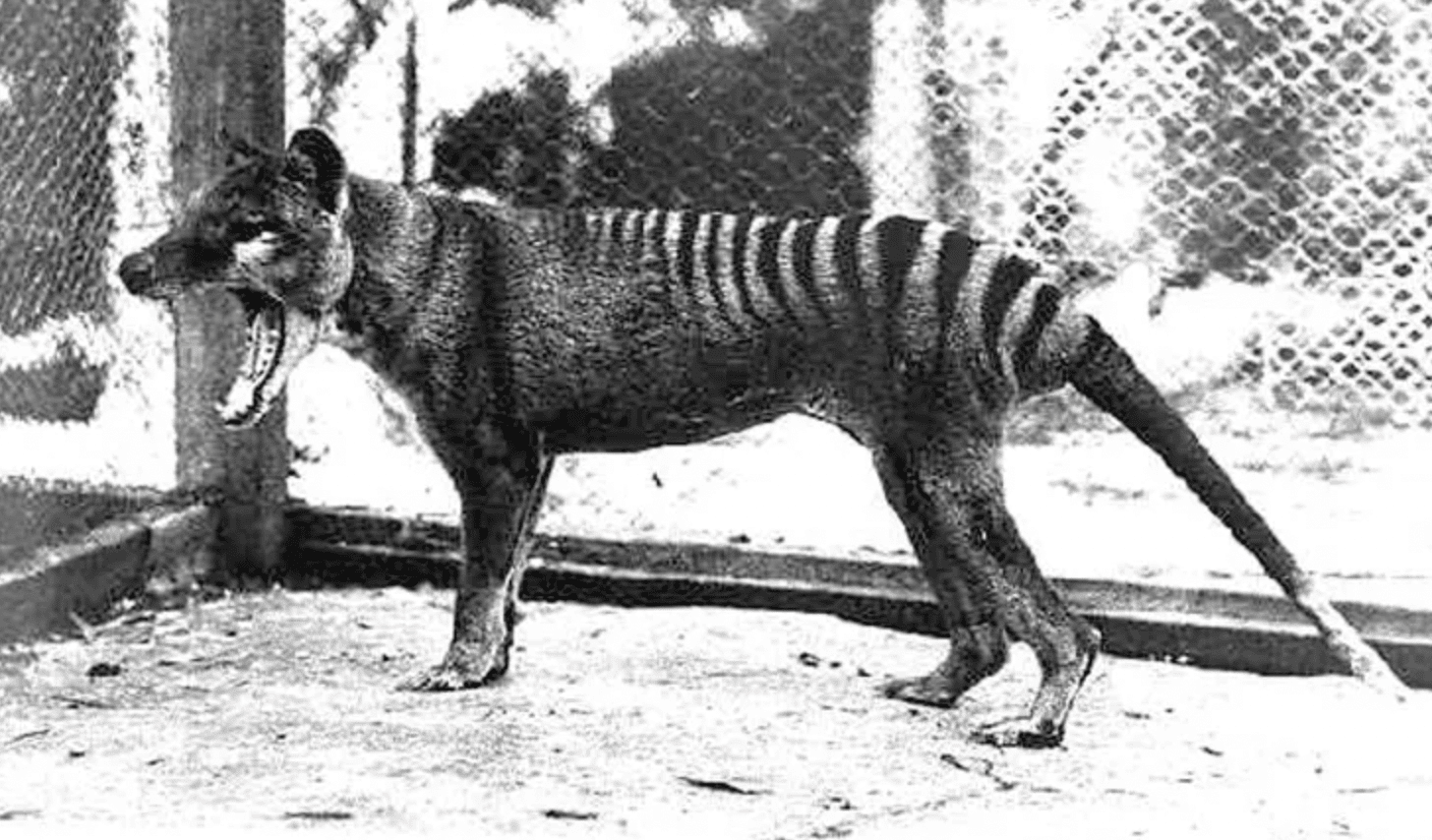
It Was Shy And Nocturnal
Contrary to popular belief, the Tasmanian Tiger was shy. It also had 46 teeth, and its bite wasn’t considered to be too powerful. Typically, it would avoid contact with people as much as possible. When they were excited or anxious, they’d make a sound that was like a husky cough. People believed the animal was destructive and could kill hundreds of animals, when, in fact, it could only tackle animals like small ostriches (Thought Co).
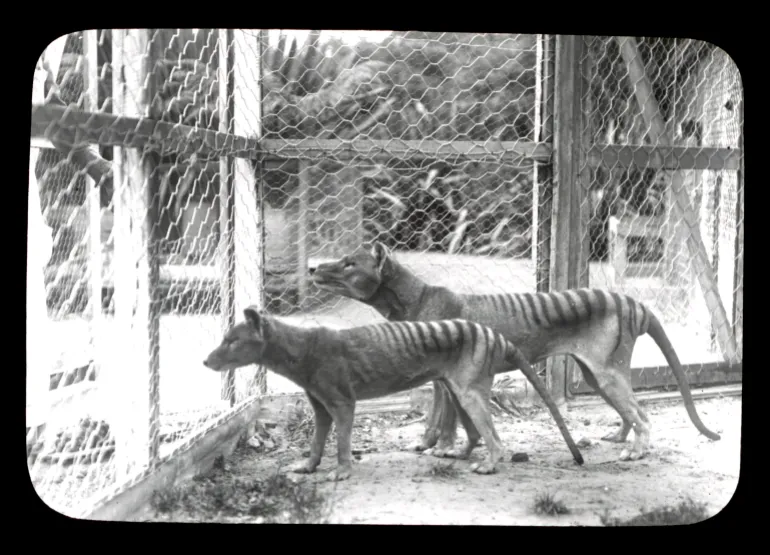
The Sudden Disappearance
Originally native to Australia and Papua New Guinea, The Tasmanian Tiger disappeared more than 2,000 years ago. Its sudden disappearance is left to speculation, some argue it was a human invasion, while others argue it was because of the arrival of the dingo. It is true, though, that the government in the 19th and 20th centuries made hunting the Tasmanian Tiger appealing. People believed killing off the tiger was the only way to protect their livestock. In September 1936, the Tasmanian Tiger gained protection status, and only two months later, the last one died in a zoo (Smithsonian Magazine).

No Fair Chance
The Tasmanian Tiger never had a fair chance. The government put out an insane claim that convinced people to kill off the tiger. Biologist Nick Mooney claimed, “As the colony settled in and sheep arrived, a conflict started immediately. At one stage there was a claim that more sheep were killed [by thylacines] every year than were sheep in Tasmania.” This created mass predator hysteria. He went on to say, “It was just classic tabloid rubbish. So the bounty was installed and that was the death knell for the thylacine.” From the very beginning, the Tasmanian Tiger was doomed (Alijazeera).
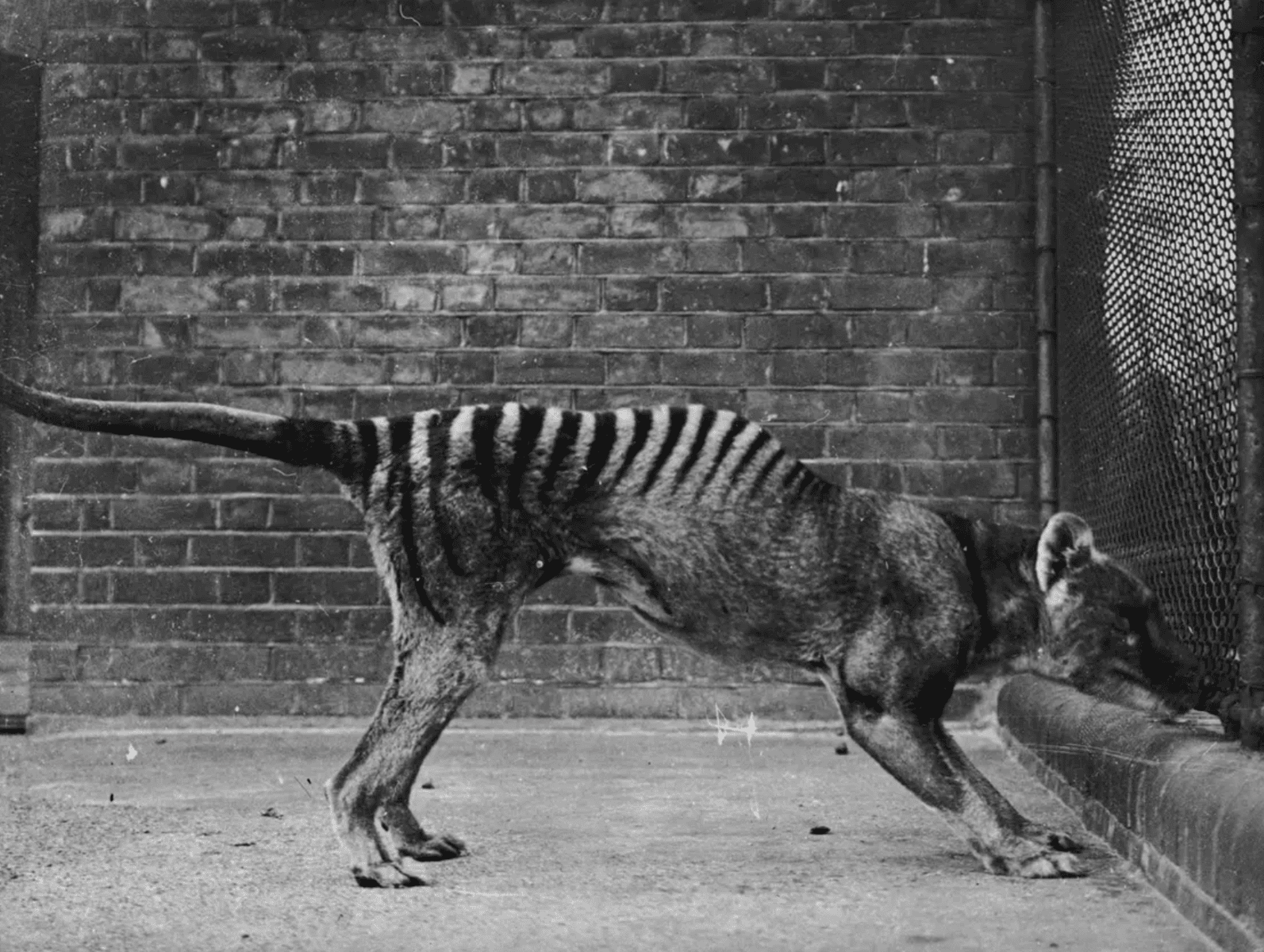
Their Fate Was Sealed
With the arrival of British colonists during the 19th century, the fate of the Tasmanian Tiger didn’t stand a chance. Not only did people believe it was killing their livestock, but that it was committing genocide against the Indigenous population. The only way to find a solution to this issue was to kill the predator. The last Tasmanian Tiger ever to walk this planet died in 1986 (NMA).
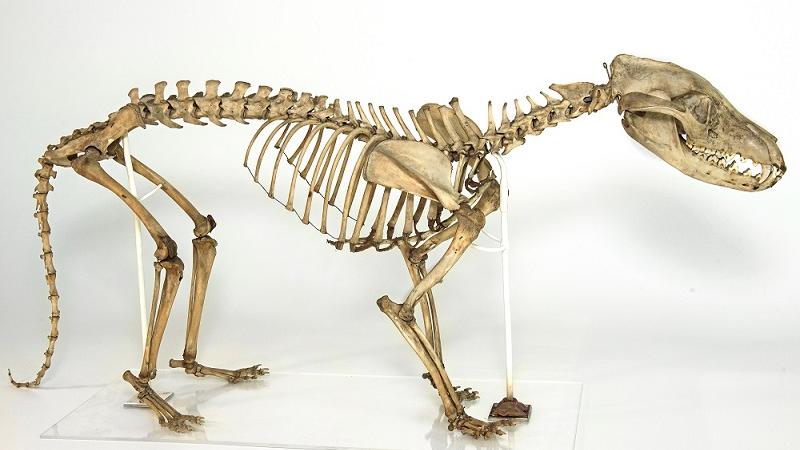
Evolutionary Anachronism
The thylacine was often described as a “living fossil” due to its unique characteristics and resemblance to some prehistoric marsupials. Its scientific name, Thylacinus cynocephalus, even translates to “pouched dog with a wolf’s head.” This evolutionary anomaly is a testament to the concept of evolutionary stasis, where some species retain ancient traits over extended periods, often because they are well-suited to their ecological niche. In the case of the Tasmanian tiger, its wolf-like head, stiff kangaroo-like tail, and marsupial pouch were features that persisted through eons of evolution, adapting to the specific challenges and opportunities presented by its habitat. (Live Science)
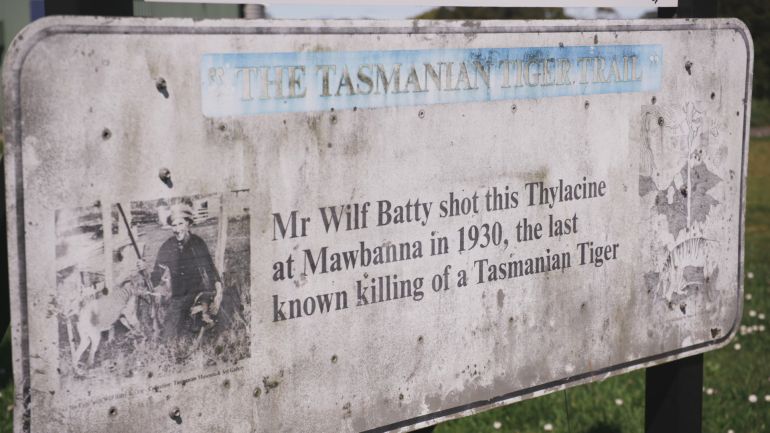
Last Man Standing
The tragic demise of the Tasmanian tiger, despite gaining protection status, is a poignant example of how conservation efforts sometimes come too late to save a species on the brink of extinction. The last known thylacine in the wild met its unfortunate end when Wilfred Batty shot the animal in an attempt to safeguard his cherished chickens on his farm in Mawbanna, Tasmania. This poignant event underscores the complex and often conflicting relationship between humans and wildlife, where the need to protect one’s livelihood can clash with the imperative to preserve endangered species. It serves as a somber reminder of the irreversible consequences that human actions can have on the natural world and underscores the importance of proactive conservation measures to prevent such tragic losses in the future. (Blue Hills Honey).
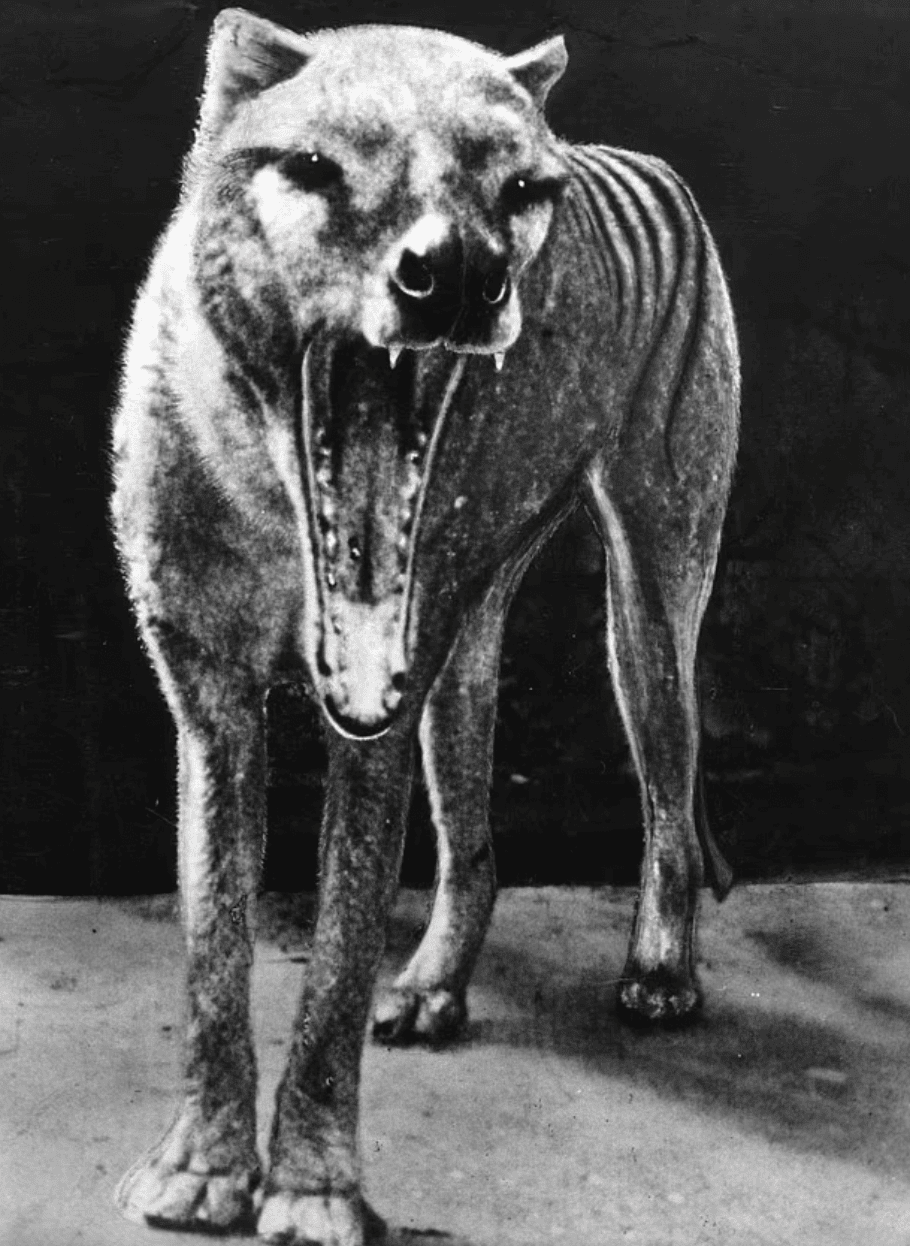
A Victim Of Neglect
One of the saddest facts about the Tasmanian Tiger is that it was a victim of neglect. He was shy and nocturnal, and zoo keepers left him out in the cold to die alone. Before he died, footage shows the Tasmanian tiger, named Benjamin, pacing back and forth, locked out of his sleeping quarters. Others also believe he suffered from disease, having been locked behind bars at the zoo. The last tiger, which lived at the Beaumaris Zoo in Hobart, died from cruel neglect (Daily Mail).
1999 Attempt To Bring Them Back
In 1999, a pioneering research team at the Australian Museum embarked on a groundbreaking endeavor known as the Thylacine Cloning Project, with the audacious goal of resurrecting the Tasmanian tiger from extinction. Their journey into the past began with the acquisition of tissue samples from a female thylacine that had been meticulously preserved in alcohol for more than a century. With remarkable persistence, the team managed to extract DNA from these ancient specimens, marking a significant milestone in the project’s early stages. By 2002, they had achieved the remarkable feat of replicating individual genes, sparking worldwide fascination and hope for the revival of this enigmatic marsupial. However, the project faced a formidable setback in 2005 when researchers determined that the quality of the extracted DNA was too degraded and fragile to be effectively manipulated. This disheartening discovery ultimately led to the project’s abandonment, highlighting the formidable challenges associated with de-extinction efforts and underscoring the need for technological advancements to match the ambition of bringing back extinct species. (Live Science)
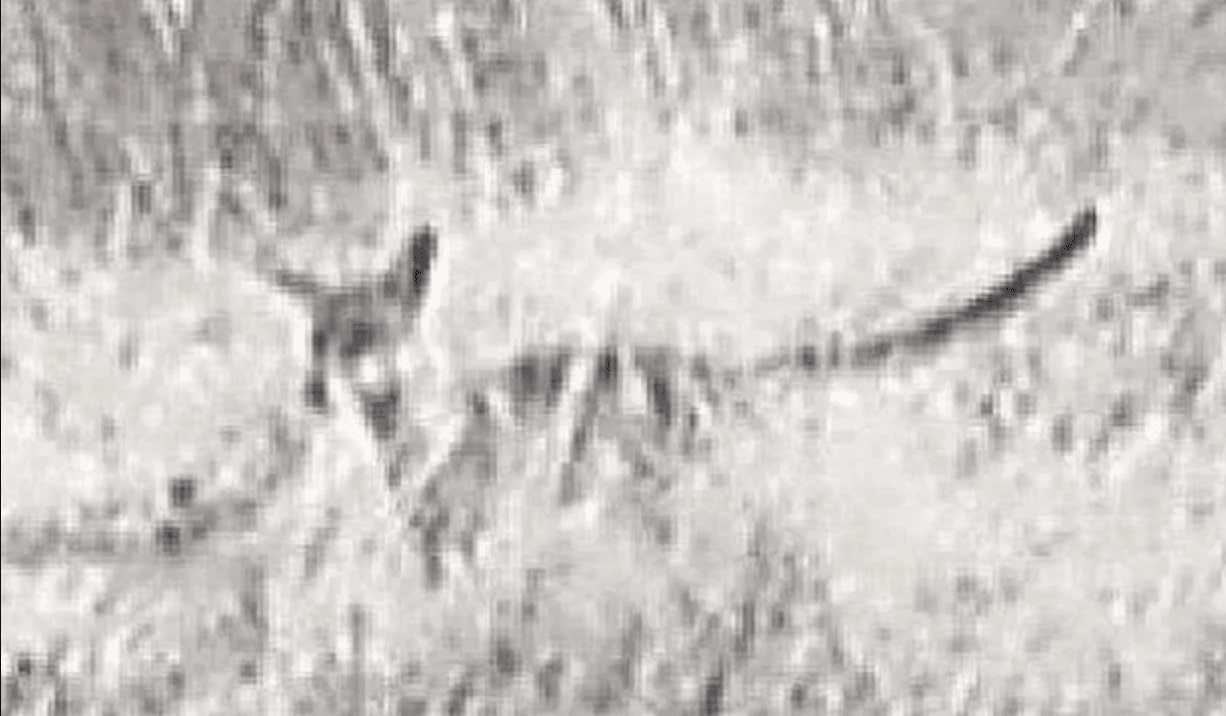
Unusual Sightings
Since its disappearance, people claim to have seen the Tasmanian Tiger. Biologist Nick Mooney said, “There’s been thousands of sighting reports. I’ve met many people who firmly believe that they’ve seen thylacines. They’re absolutely convincing. Whether they did or not is a completely different issue.” No one truly knows if these people are telling the truth or not. At the very least, the sheer thought of spotting an extinct animal is exciting, especially one as mysterious as the Tasmanian Tiger (Aljazeera).
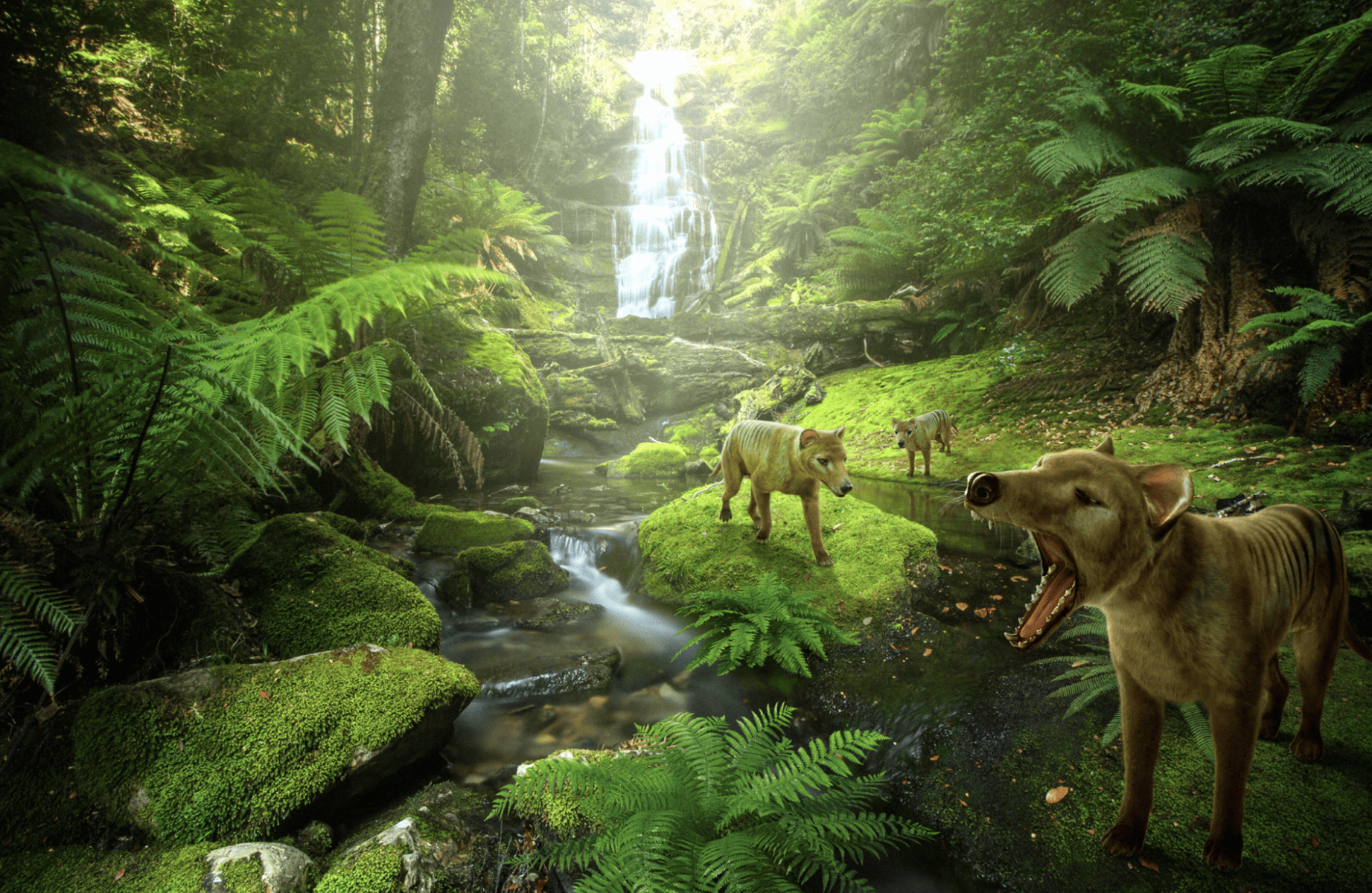
Inconclusive Video Evidence
Some people attached cameras to trees to try and capture video evidence of the Tasmanian Tiger, though the results are inconclusive. The images typically come out too blurred or are obviously of other animals. Mooney went on to say, “There’s been lots of false alarms and lots of want-to-be evidence, lots of wishful thinking. But I’ve seen nothing that I think is evidence of a thylacine. All it can say is it’s very unlikely. And I would agree it’s very unlikely there are any thylacines there, but you can’t say they’re not.” While science would never rule it out, it’s very unlikely there are still Tasmanian Tigers wandering this planet (Aljazeera).
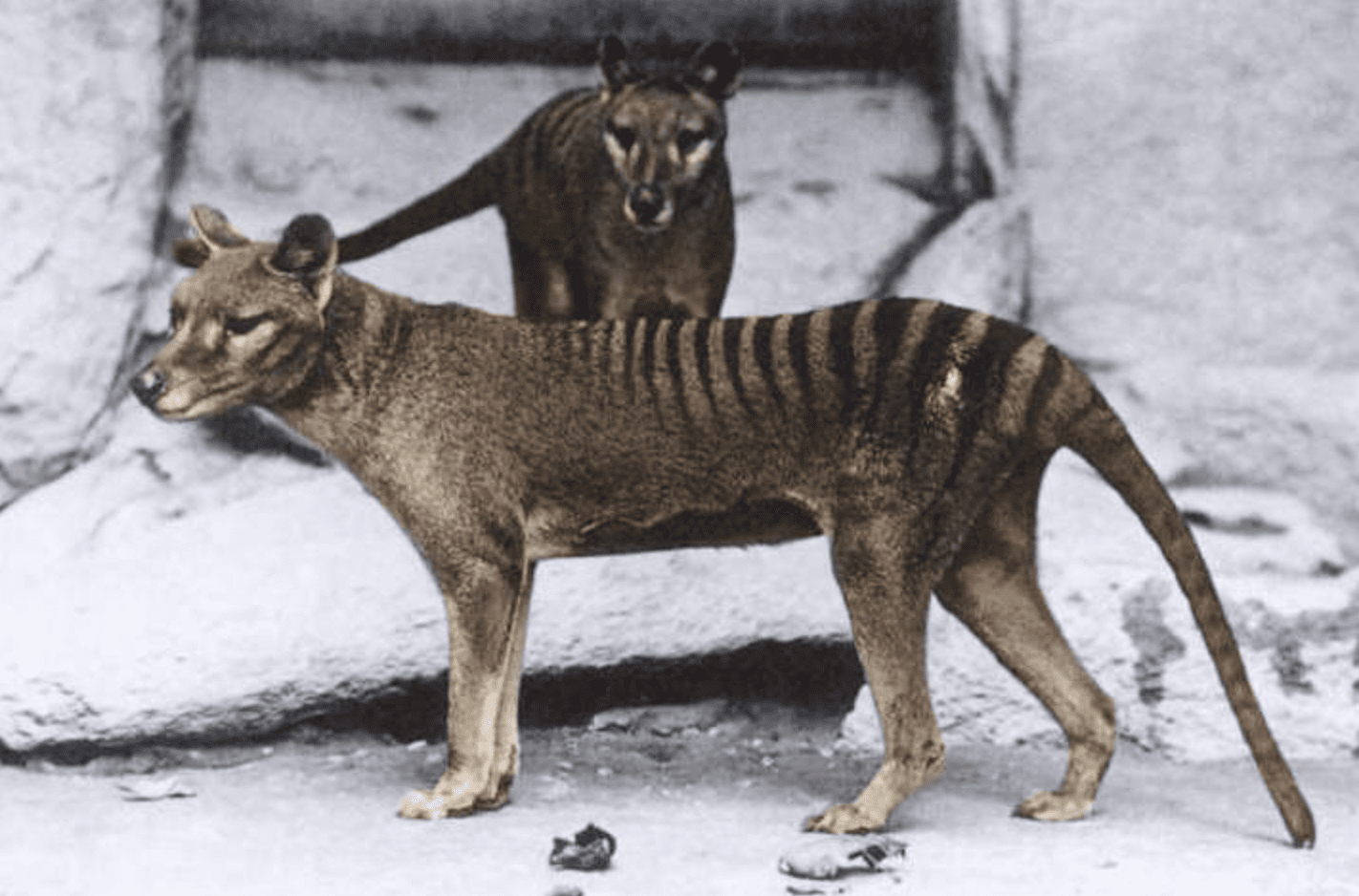
A 2020 Discovery
Back in 2020, at the Natural Museum of History in Sweden, scientists discovered a thylamine species in storage, just sitting there, as if waiting for scientists. The team collected skin and cell samples from the animal, ground each sample into a powder, added chemicals as building blocks for the RNA, and used an algorithm to compare the strings of nucleotides, including the thylacine. Seventy percent of the RNA was related to the Tasmanian Tiger (Science News).
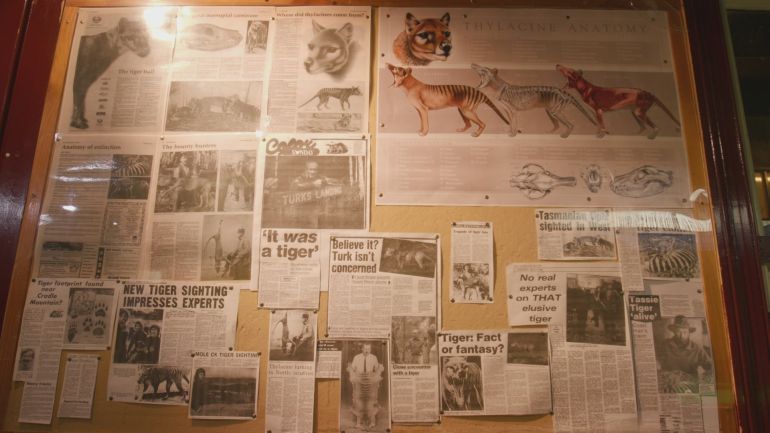
A New Chance At Life
Because of their horrible, sad outcome, scientists are now looking to bring the Tasmanian Tiger back into existence. If you didn’t think resurrection was possible, let’s take a look at the scientists and how they’re going to do it. Professor Andrew Pask from the University of Melbourne said, “The fact that it’s an incredibly amazing, beautiful marsupial that was brutally hunted by humans to extinction, we owe it to those species to apply the time and the money to return them to the ecosystem and restore some of these wrongs that we’ve done in the past.” With this mindset, scientists are taking their RNA found in a museum and bringing it back to life (Alijazeera).
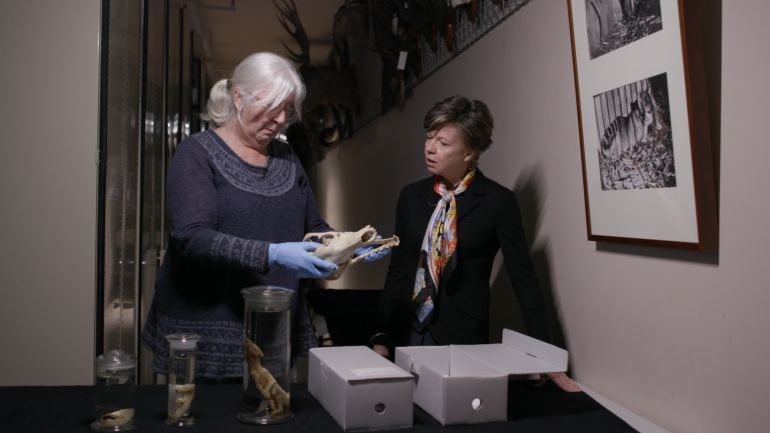
A Nearly Impossible Discovery
Andrew Pask, a biologist at the University of Melbourne involved with the new research on the Tasmanian Tiger, finds it almost unbelievable. Upon discovery of the RNA, he said, “It’s much less stable than DNA.” Even more outlandish is that the discovery was made at room temperature, instead of frozen conditions which we’ve seen before. He went on to say, “It’s transformed the way that we look at museum and archive specimens.” Perhaps this discovery will open doors for other, discoveries (Science News).
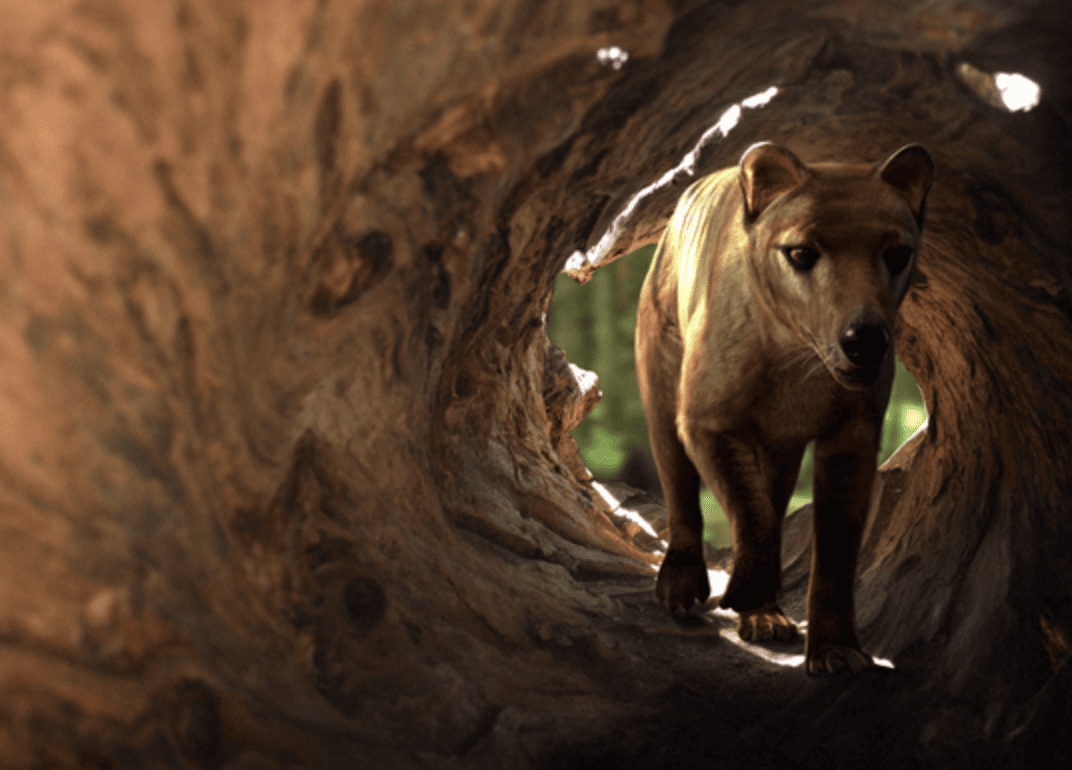
Time For De-Extinction
Now that it’s 2023, it seems like anything is possible. And de-extinction is one of them. The Thylacine Integrated Genetic Restoration Research Lab received $3.6 million to purchase equipment, a team of researchers, and all the necessary tools to bring the Tasmanian Tiger back to life. They hope to have a “de-extincted thylacine-ish thing” in about a decade. One way scientists will bring the Tasmanian Tiger back is to use genes from its closest relative, the fat-tailed dunnart. Even though their goal is an animal that’s 99.9 percent thylacine, it might be more like 90 percent, with about 100 proxy thylacines. That’s better than zero (Scientific American).
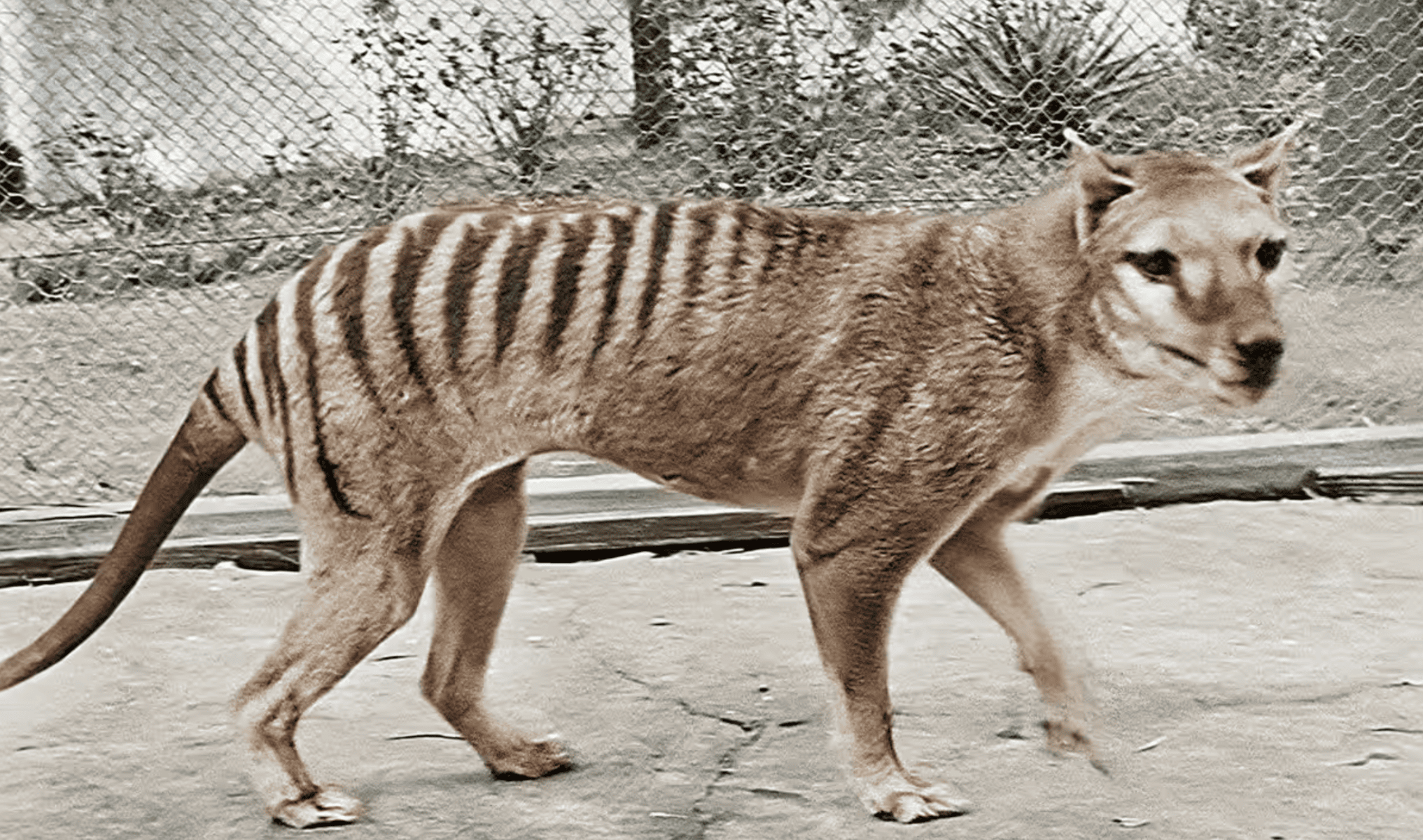
From Fat-Tailed Dunnart Into Thylacine
To put it simply, scientists will take DNA from the fat-tailed dunnart and turn them into thylacine cells. They’ll need to mimic reproduction, an embryo, and an artificial womb. Mammal expert Kris Helgen said, “The idea that science could restore the thylacine is just so lovely it captures the imagination. A few million dollars [are] not going to give us an escape hatch from extinction.” It’s good to look at the harsh reality of the matter, but remain hopeful. Some even believe it’s better to spend money on the living than the dead, but only time will tell. As Colossal Biosciences said, “Combining the science of genetics with the business of discovery, we endeavor to jumpstart nature’s ancestral heartbeat.” This might be the first animal in the world that scientists de-extinct. We will have to sit back and wait to see what unfolds over the next decade (The Guardian).
